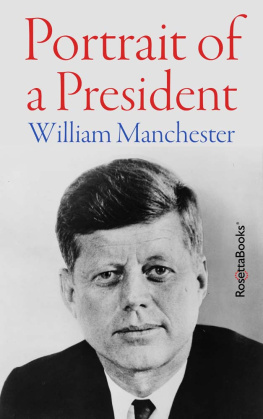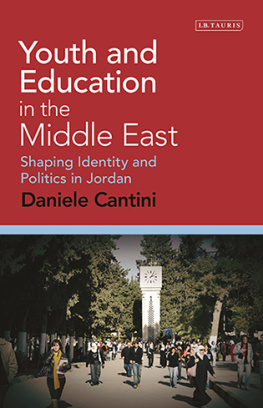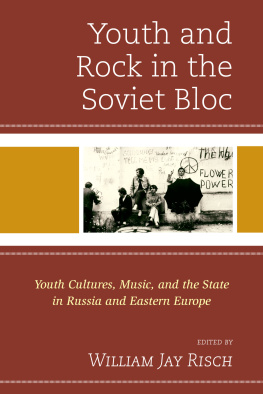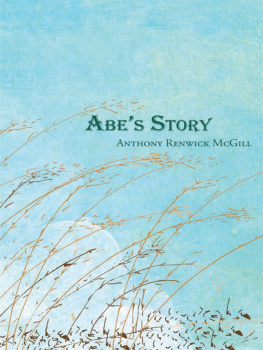This book is a publication of
Indiana University Press
Office of Scholarly Publishing
Herman B Wells Library 350
1320 East 10th Street
Bloomington, Indiana 47405 USA
iupress.indiana.edu
2019 by Indiana University Press
All rights reserved
No part of this book may be reproduced or utilized in any form or by any means, electronic or mechanical, including photocopying and recording, or by any information storage and retrieval system, without permission in writing from the publisher. The paper used in this publication meets the minimum requirements of the American National Standard for Information SciencesPermanence of Paper for Printed Library Materials, ANSI Z39.48-1992.
Manufactured in the United States of America
Library of Congress Cataloging-in-Publication Data
Names: Bartelt, William E., editor. | Claybourn, Joshua A., editor.
Title: Abes youth : shaping the future president / edited by William E. Bartelt and Joshua A. Claybourn.
Description: Bloomington, Indiana : Indiana University Press, 2019. | Includes bibliographical references and index.
Identifiers: LCCN 2018049660 (print) | LCCN 2018051362 (ebook) | ISBN 9780253043924 (e-book) | ISBN 9780253043917 (hc : alk. paper) | ISBN 9780253043894 (pb : alk. paper)
Subjects: LCSH: Lincoln, Abraham, 18091865Childhood and youth. | PresidentsUnited StatesBiography. | IndianaBiography.
Classification: LCC E457.32 (ebook) | LCC E457.32 .A24 2019 (print) | DDC 973.7092 [B]dc23
LC record available at https://lccn.loc.gov/2018049660
1 2 3 4 5 24 23 22 21 20 19
IN THE WINTER OF 1860, SHORTLY BEFORE ABRAHAM LINCOLN delivered his memorable speech at New Yorks Cooper Union, a newspaper there ran a thoughtful assessment of the candidates early years in Indiana, where he lived between the ages of seven and twenty-one: Probably six months in all of the rudest sort of schooling comprehends the whole of his technical education. But hard work and plenty of it, the rugged experiences of aspiring poverty, the wild sports and rude games of a newly and thinly populated forest regionthe education born of the log cabin, the rifle, the ax, and the plowmade him the man he has since proved himself.
To help tell the story of those formative years in Lincolns life, during the 1920s intrepid members of the Southwestern Indiana Historical Society performed a great service to Lincoln scholarship by conducting what they termed the Lincoln Inquiry. They could not scour contemporary local newspapers, for none of those published in Lincolns time survived, nor did they engage in the kind of painstaking work later done by Louis A. Warren in many unpublished records (census returns, tax books, election results, voter rolls, and the like). But the fruits of their labors have been hard to access, for some of the papers written by society members were unpublished and available only in manuscript form at various repositories, including the Willard and Central Libraries in Evansville and the William Henry Smith Memorial Library in Indianapolis. Moreover, some of their valuable information about Lincoln and his friends is found in the personal correspondence of the societys members, likewise available only in repositories such as the Indiana Historical Society.
The editors of the present volume have judiciously chosen some of the most informative essays and letters, have annotated and indexed them thoroughly, and are now making them available for students, scholars, and general readers interested in Lincolns youth and adolescence. The most revealing material consists of reminiscences by people who knew Lincoln; but unfortunately by the time the Inquiry got under way few were still alive. Some, however, had shared their recollections of Lincoln with friends and family, who in turn passed them along to the societys investigators. Although that form of testimony is secondhand, it is useful nonetheless. In the following pages, such accounts can be found in contributions by Roscoe Kiper, Thomas Hardy Masterson, Elbert Hayford, and Will Adams.
Some society members had interviewed Lincolns contemporaries well before the Inquiry was launched, most notably William Fortune and Anna C. OFlynn. In 1881, Fortune had sought out informants who had known Lincoln. Among them, two were especially noteworthy: Elizabeth Crawford and Nathaniel Gentry. In his paper Lincoln in Indiana, included in the present volume, Fortune tells how he became such an interviewer. Alas, his notes have not been published.
Anna C. OFlynn recalls in her paper, The Environments of Abraham Lincoln in Indiana: The Best Witnesses, how she corresponded with many people who had known Lincoln: I wrote to nearly everybody in the United States that knew Lincoln when a boy. I think I had over two hundred letters. Along with a friend, she toured Spencer County in 1895 and 1896 and reported that she spoke with hundreds of good people and wrote to many others.
In The Lincolns in Spencer County, Ida D. Armstrong tells how, in the 1870s, her journalist father pursued his interest in Lincoln by talking with people who had known the future president. She does not reveal much of what he learned, but readers interested to know more about his findings should read his essay, History of Spencer County, in An Illustrated Historical Atlas of Spencer County, Indiana.
In addition to these firsthand and secondhand recollections of Lincoln, many papers in the present volume provide accounts of his friends and neighbors, thus helping to re-create the social, cultural, and intellectual environment of his youth. The picture they paint is rather rosy, for a goal of the society was to describe their region more positively than previous Lincoln authors had done. Readers should be prepared to encounter a fair amount of boosterism in these pages. In contrast, as Jesse N. Weik noted, somewhat harshly, Lincolns family were indeed a sorry lothis father poor, inert, and void of ambition and the other members equally dull, improvident, and shiftless. To spend his days amid such unpalatable surroundings was a proposition from which he recoiled with feelings akin to horror. Therefore not long after reaching Macon county Illinois [in 1830] where the emigrant party from Indiana made their first settlement, he very discreetly left them behind, pushing on to a point in the adjoining county far enough away to escape the burden of their companionship.














